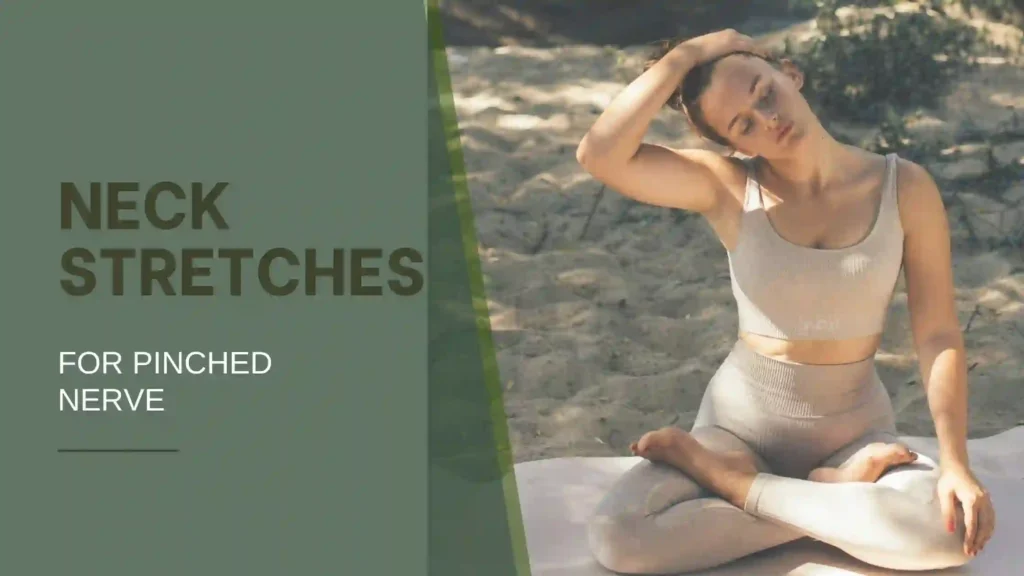That sharp, tingly, or numbing sensation in your neck? Yep, that’s likely a pinched nerve. Neck Stretches for Pinched Nerve can be a game-changer, helping to ease the pressure and reduce pain. This happens when surrounding tissues—like bones or muscles—press too hard on a nerve, sending discomfort down your shoulders, arms, and even hands. The good news? A few simple stretches can bring serious relief and help prevent future flare-ups. Let’s dive into the best moves to get your neck feeling loose and pain-free!
What Causes a Pinched Nerve in the Neck?
Before jumping into stretches, it’s essential to understand what might be causing the problem. Common causes include:
- Poor posture: Sitting hunched over a desk for hours can compress nerves in your neck.
- Herniated discs: When a disc in your cervical spine slips out of place, it can press on nearby nerves.
- Injuries: Whiplash or other neck trauma can lead to inflammation and nerve compression.
- Repetitive motions: Activities that involve repetitive neck movements can strain your cervical spine.
Understanding the root cause is key. It will help you modify your activities and maximize the benefits of these stretches, empowering you to take control of your health.
Top 8 Neck Stretches for Pinched Nerves
Chin Tucks
Chin tucks are excellent for improving posture and alleviating nerve compression. Here’s how to do them:
- Sit or stand with your back straight.
- Slowly pull your chin towards your chest as if trying to create a double chin.
- Hold for 5 seconds, then relax.
- Repeat 10-15 times.
This stretch helps strengthen the muscles at the back of your neck, easing tension on compressed nerves.
Side Neck Stretch
The side neck stretch targets the muscles along your neck, relieving tension and improving flexibility.
- Sit in a comfortable position.
- Tilt your head to one side, bringing your ear closer to your shoulder.
- Hold for 20-30 seconds.
- Switch sides and repeat 3-4 times.
You can lightly press on your head with your hand for a deeper stretch.
Upper Trapezius Stretch
This stretch targets the upper trapezius muscle, often contributing to neck and shoulder pain.
- Sit up straight and place one hand under your thigh for stability.
- Use your opposite hand to pull your head toward the opposite shoulder gently.
- Hold for 20-30 seconds and repeat on the other side.
Levator Scapulae Stretch
The levator scapulae muscle connects your neck to your shoulder blades, and stretching it can provide immense relief.
- Sit or stand tall.
- Turn your head to one side as if looking at your armpit.
- Use your hand to press your head down gently.
- Hold for 20-30 seconds and switch sides.
Neck Rotation
This simple yet effective stretch helps increase neck mobility.
- Sit or stand with your back straight.
- Slowly turn your head to the right as far as comfortable.
- Hold for 5-10 seconds, then return to center.
- Repeat on the left side. Perform 10 repetitions per side.
Shoulder Shrugs
Shoulder shrugs help release tension in your neck and upper shoulders.
- Sit or stand with your arms relaxed at your sides.
- Raise your shoulders toward your ears as high as possible.
- Hold for 2-3 seconds, then release.
- Repeat 10-15 times.
Cat-Cow Stretch
This yoga-inspired stretch is excellent for the entire spine, including your neck.
- Start on your hands and knees in a tabletop position.
- Arch your back, dropping your belly towards the floor (cow position).
- Round your back, tucking your chin to your chest (cat position).
- Flow between these positions for 1-2 minutes.
Neck Extension
Stretching the front of your neck can help balance muscle tension and relieve nerve compression.
- Sit or stand with your back straight.
- Gently tilt your head backward, looking up toward the ceiling.
- Hold for 5-10 seconds and return to center.
- Repeat 10 times.
Additional Remedies for Pinched Nerves
While stretching is compelling, combining it with other remedies can provide faster relief:
- Heat or cold therapy: Use a heating pad to relax muscles or an ice pack to reduce inflammation.
- Over-the-counter pain relievers: Medications like ibuprofen can help reduce pain and swelling.
- Massage therapy: A gentle massage can improve circulation and release tight muscles.
- Posture improvement: Invest in ergonomic furniture and practice good posture habits to prevent recurring issues.
Tips for Safe Neck Stretching With a Pinched Nerve
While these stretches can provide relief, stretching safely is essential to avoid further injury. Keep these tips in mind:
- Warm-up: Do light neck rolls or shoulder shrugs before stretching to warm up your muscles.
- Don’t force it: Never push your neck beyond its comfortable range of motion.
- Breathe deeply: Proper breathing helps relax your muscles and enhances the stretch.
- Stop if it hurts: Stretching should relieve tension, not cause pain. If a stretch hurts, stop immediately.
When to Seek Medical Attention
While many pinched nerves resolve with self-care, some cases may require medical intervention. Seek professional help if:
- The pain persists for more than a few weeks.
- You experience muscle weakness or severe numbness.
- The pain radiates down your arms or into your hands.
- You have difficulty performing daily activities due to discomfort.
A healthcare provider may recommend physical therapy, corticosteroid injections, or even surgery in severe cases.
Conclusion: Stretch Your Way to Relief (H2)
Neck stretches for pinched nerves can be a game-changer, offering relief from pain and preventing future flare-ups. Incorporating these simple exercises into your daily routine will improve your neck’s flexibility and strength, allowing you to move through life more comfortably. Remember, consistency is key, and listening to your body is essential. If you’re struggling with persistent pain, don’t hesitate to seek medical advice. Here’s to a healthier, pain-free neck!

